The Enigmatic World of Scorpions: A Closer Look at Their Habitat and Distribution
Scorpions, with their menacing appearance and reputation, have captured the fascination of humans for centuries. These ancient arachnids, known for their eight legs, segmented tail, and ability to glow in the dark, are found in diverse habitats across the globe. But what exactly defines a scorpion?
These remarkable creatures belong to the class Arachnida and are closely related to spiders, ticks, and mites. With over 2,500 known species distributed worldwide, scorpions exhibit a range of unique characteristics that make them stand out among other animals.
One key feature that sets scorpions apart is their venomous stinger located at the end of their tail. While not all scorpion venom is dangerous to humans, some species of scorpion sting possess potent neurotoxins that can cause severe pain or even death.
However, it’s important to understand that scorpions primarily use their venom as a means of subduing prey items rather than as a defense mechanism against larger predators. To truly appreciate these ancient arachnids, we must delve into the intricacies of their habitat preferences and distribution patterns.
Understanding where scorpions live can help us comprehend how they have adapted to specific environments over time. Knowing how different factors influence scorpion habitats is crucial for both scientists studying these creatures and individuals residing in areas with high scorpion populations.
Factors such as temperature, climate conditions, moisture levels, and humidity play significant roles in dictating where these scorpions live and thrive. For example, desert ecosystems are home to many species due to the arid conditions that suit them best.
On the sea level, on the other hand, forests provide secondary habitats for certain types of forest-dwelling species. Intriguingly enough—and this may come as a surprise to many—there are even scorpion species that have adapted to aquatic or semi-aquatic habitats.
While not as widely known, these unique scorpions have evolved specialized adaptations to survive in water environments. They possess unique respiratory structures and modified appendages that allow them to navigate freshwater sources, opening up a whole new realm of exploration for scientists and nature enthusiasts alike.
Exploring the habitat preferences and distribution patterns of scorpions reveals the incredible diversity within this arachnid group. By understanding where they live and how they adapt to their surroundings, we gain insights into their evolutionary journey.
Additionally, comprehending these aspects helps us coexist with other scorpions more peacefully and appreciate the ecological roles they play in their respective habitats. So, let us embark on a captivating exploration of scorpion habitat and distribution—unveiling the mysteries that lie within these enigmatic creatures’ world.
Explore Our Expert Scorpion Control Services! Discover how our professional scorpion control and treatment services can effectively tackle your scorpion infestation. Click to learn more about our professional scorpion control and treatment services!
General Habitat Preferences of Scorpions
Overview of Scorpion Habitats Worldwide
Scorpions, those intriguing creatures with their fearsome appearance and stinging tail, can be found in various habitats across the globe. These fascinating arachnids have managed to adapt and survive in diverse environments. While some species prefer the dry, arid conditions of deserts, others have made themselves at home in forests or woodlands.
Remarkably, there are even scorpions that have evolved to live in water or semi-aquatic habitats. It is this wide range of habitats that contributes to the incredible diversity of these ancient creatures.
Global Distribution and Adaptations
Scorpions have a diverse global distribution, inhabiting various environments across the continents, excluding Antarctica. From deserts to tropical rainforests, these resilient arachnids have adapted to thrive in different habitats. They have remarkable abilities to withstand extreme temperatures, scarcity of resources, and other environmental challenges. To explore the geographical distribution of scorpions and their adaptations to different environments, visit our article on where do scorpions live?
Conservation and Preservation
Understanding where scorpions live is crucial for their conservation and preservation. By studying their habitat preferences and distribution patterns, we can identify areas of ecological significance and implement appropriate measures to protect their natural environments. Preserving scorpion habitats is essential for maintaining biodiversity and ensuring the long-term survival of these fascinating arachnids. Discover the importance of conserving scorpion habitats and learn how you can contribute to their preservation in our comprehensive article on Scorpion Distribution: Understanding The Importance Of Their Habitat.
Factors Influencing Scorpion Habitat Selection
The habitat preferences of scorpions are influenced by several factors. One crucial aspect is temperature and climate.
Generally, scorpions thrive in warm climates and are most abundant in regions where temperatures range from 68°F to 100°F (20°C to 38°C). However, some species can tolerate extreme heat or cold temperatures better than others.
Similarly, moisture levels play a vital role in scorpion habitat selection. While certain species can survive with very little moisture, others require more humidity to thrive.
Temperature and Climate Preferences
Scorpions exhibit remarkable adaptability when it comes to temperature and climate preferences. Desert-dwelling species like the bark scorpion occur commonly in sandy soil under rocks or logs, where they can find shelter during the hottest parts of desert heat during the day.
These arthropods have developed unique adaptations allowing them to withstand extreme heat while remaining active during cooler nights. In contrast, forest-dwelling scorpions may seek refuge under decomposing leaves or within tree bark crevices where they find a more temperate environment.
Moisture Levels and Humidity Requirements
The moisture requirements of scorpions vary among species. Some spiders can survive in relatively dry environments with minimal water sources, relying on the moisture obtained from their prey or dew condensation. Others, particularly those inhabiting humid regions or areas near bodies of water, have evolved to adapt to higher moisture levels.
These species pets scorpions often seek refuge in burrows or other sheltered spots during dry periods and emerge when conditions become more favorable. Understanding the general habitat preferences of scorpions is crucial not only for scientific research but also for pet owners interested in keeping these captivating creatures.
By replicating their natural habitats as closely as possible, enthusiasts can provide a suitable environment that promotes the well-being and survival of pet scorpions. Furthermore, comprehending the specific temperature and humidity requirements can help minimize risks associated with scorpion stings as it enables us to identify potential encounters between humans and these fascinating arachnids.
So next time you come across a scorpion in its natural habitat, whether it’s one of the desert-dwelling bark scorpions or a forest-dwelling thick-tailed scorpion, take a moment to appreciate the incredible adaptations that allow them to thrive in such diverse environments. From their temperature tolerance to their ability to find moisture even in arid surroundings, these ancient creatures continue to fascinate us with their ability to conquer and adapt within nature’s most challenging habitats.
Terrestrial Scorpion Habitats
Deserts: Unforgiving and Prickly Abodes
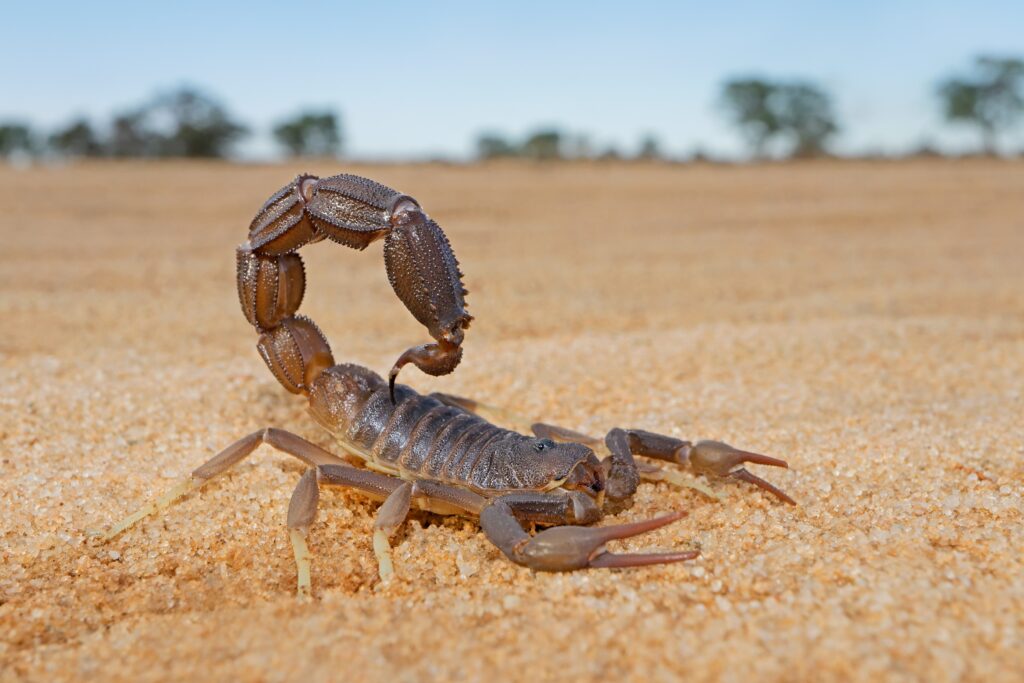
Deserts, with their vast stretches of arid landscapes, serve as the primary habitats for many scorpion species. These resilient creatures have conquered some of the most extreme environments on Earth. From the scorching dunes of the Sahara to the sun-baked desolation of the Sonoran Desert, scorpions have developed remarkable adaptations to thrive in these unforgiving lands.
The Art of Survival in Arid Environments
Surviving in deserts requires exceptional adaptations, and scorpions possess a host of remarkable features that help them endure the harsh desert conditions. One such adaptation is their ability to conserve water efficiently. Scorpions’ exoskeletons are covered with a waxy layer that helps reduce water loss through evaporation, allowing them to withstand extended periods without access to water sources.
Furthermore, scorpions have developed specialized respiratory systems that minimize water loss during breathing. They breathe through tiny structures called book lungs, which efficiently extract oxygen from the air while reducing moisture loss—a crucial adaptation for life in arid regions.
Exploring Desert-Dwelling Scorpion Species
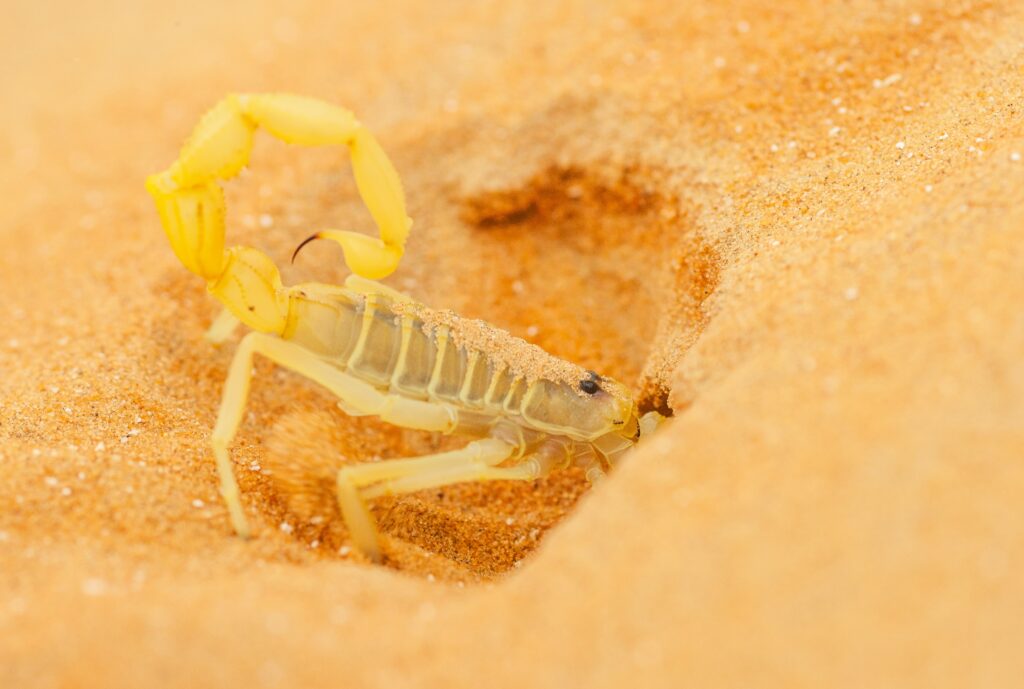
There are numerous fascinating and dangerous species of scorpions found in deserts worldwide. One notable example is the Black Emperor Scorpion (Pandinus imperator), known for its impressive size and jet-black exoskeleton.
Native to sub-Saharan Africa, this species spends its days hidden away in burrows and emerges at night as an apex predator. In addition to Pandinus imperator, another desert-dwelling species worth mentioning is Scorpio maurus.
Found primarily in North Africa and parts of the Middle East, this venomous scorpion is known for its striking appearance and potent sting. Its venom can prove life-threatening to humans, making it a subject of both fear and fascination.
Forests and Woodlands: Hidden Enclaves of Scorpions

While deserts are the primary habitats for most scorpions now, certain species adult scorpions have managed to establish secondary habitats within forests and woodlands. These scorpion populations have adapted to the unique challenges posed by these lush environments.
Characteristics of Forest-Dwelling Scorpions
Forest-dwelling scorpions display distinctive characteristics that set them apart from their desert-dwelling counterparts. These species often have longer limbs, allowing for better maneuverability in densely vegetated areas. They possess sensory hairs on their bodies, enabling them to navigate through cluttered environments and detect potential threats or prey.
Unlike their desert relatives who rely on burrows for shelter, forest-dwelling scorpions seek refuge under logs, rocks, or dense foliage during the day. This behavior helps protect them from predators such insects such as spiders and other nocturnal hunters which emerge when night falls.
An Intricate Dance: Scorpions and Forest Ecosystems
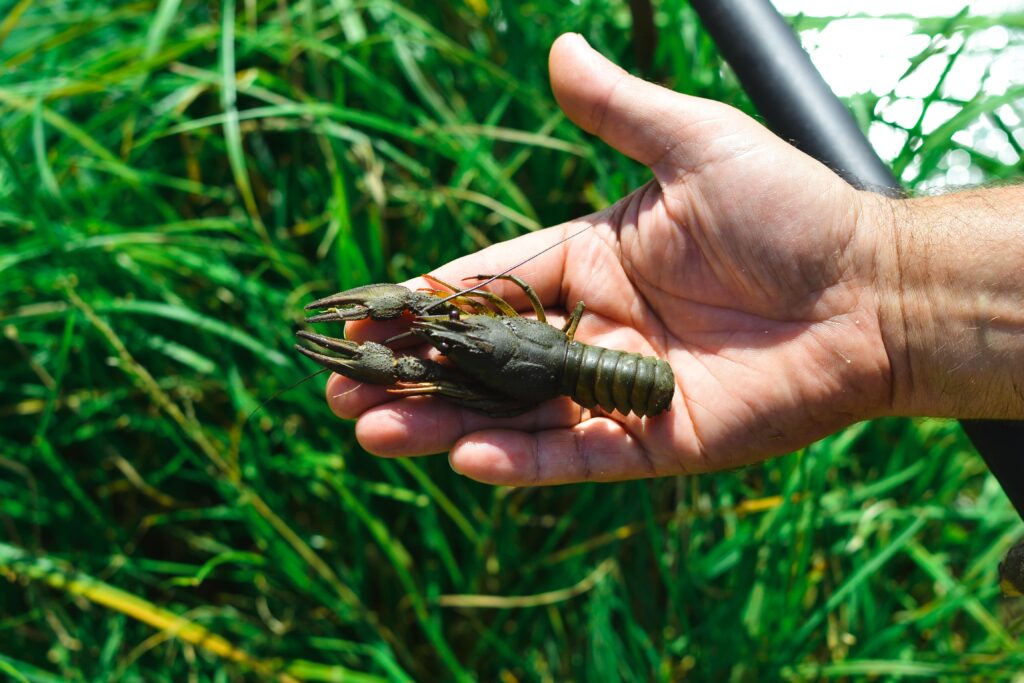
Scorpion populations play an essential role in maintaining equilibrium within forest ecosystems. As predators themselves, they help control populations of other invertebrates such as insects and spiders. By regulating these populations, they contribute to the overall health and balance of forest ecosystems.
Additionally, certain species of forest-dwelling scorpions provide food sources for larger predators like birds or other small animals and mammals. Through this intricate dance between predator and prey relationships within forests, scorpions become integral components of a complex web of life.
While deserts serve as primary habitats for many scorpion species due to their remarkable adaptations to arid conditions, forests also provide niche environments where certain species thrive. Understanding the characteristics that enable these fascinating creatures to survive in both desert and forest habitats deepens our appreciation for the diverse ways nature has shaped and interconnected these ecosystems.
Aquatic Scorpion Habitats
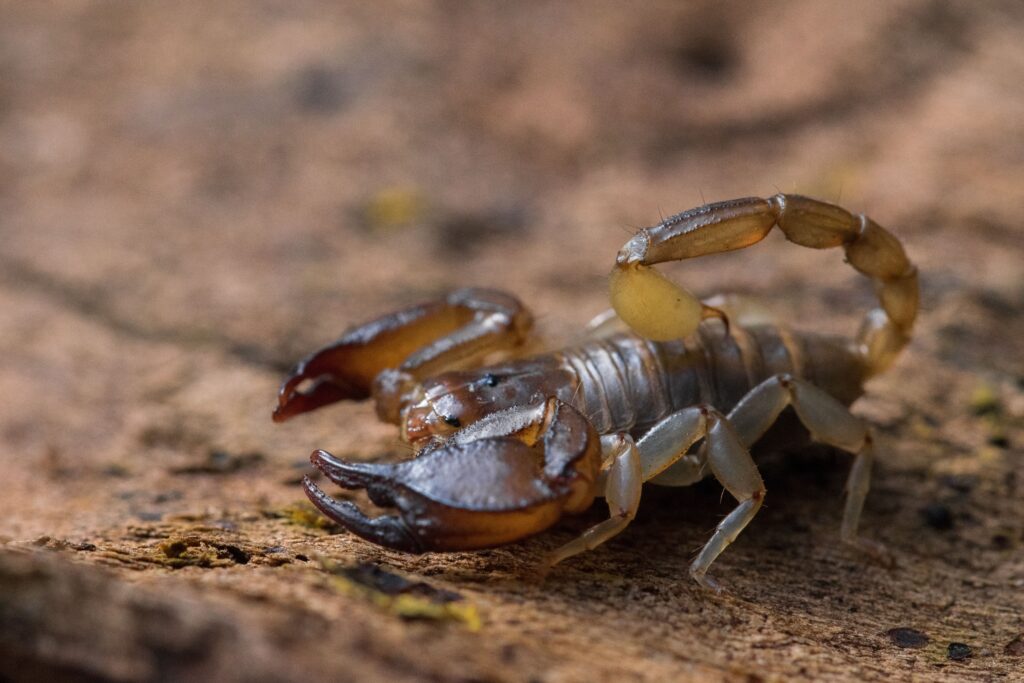
Exploring the Hidden World of Water-Loving Scorpions
Scorpions, with their eight legs and stinger-filled tails, are often associated with dry desert regions and arid landscapes. However, what many people may not realize is that there are unique species of scorpions that have adapted to aquatic or semi-aquatic habitats. These fascinating creatures have evolved special characteristics and behaviors to thrive in water environments, making them a captivating subject for exploration.
Adaptations to Water Environments
Although scorpions are typically known as terrestrial creatures, those adapted to aquatic or semi-aquatic lifestyles have made remarkable adjustments. One of the key adaptations is their ability to breathe underwater. Unlike their land-dwelling counterparts, these aquatic scorpions possess modified book lungs or tracheal systems that facilitate gas exchange in water.
This allows them to extract oxygen from the surrounding water and continue their existence in submerged habitats. Moreover, these unique scorpion species have also developed specialized appendages that aid in swimming and sensing their surroundings underwater.
Their legs may be more elongated or equipped with small hairs called setae which increase surface area for better propulsion. Additionally, some aquatic scorpions possess sensory structures known as pectines on the underside of their bodies, assisting them in detecting movements and vibrations in the water.
Examples of Aquatic and Semi-Aquatic Species
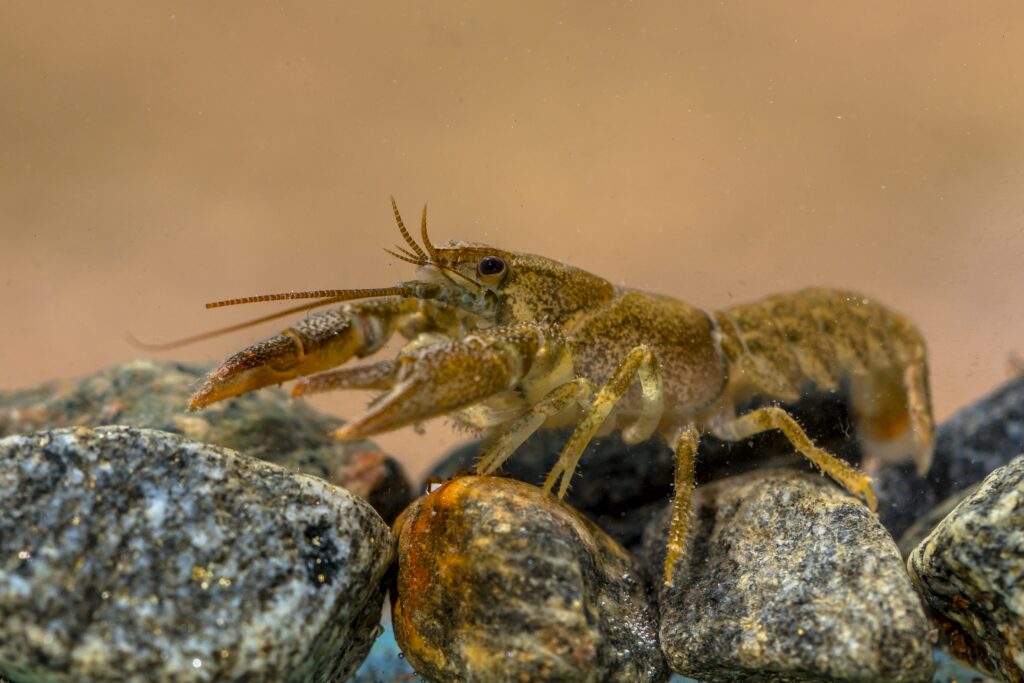
One example of an aquatic scorpion is Heterometrus swammerdami, one species commonly referred to as the Giant Asian Forest Scorpion. Native to India and Sri Lanka, this impressive species can be found near freshwater sources such as rivers or streams within dense forests. While not fully aquatic like some scorpions hide other species we will discuss later, it frequently submerges itself partially under the water, making it an interesting transitional form.
Another incredible example is the North African Desert Scorpion, Androctonus australis. Unlike a vast majority of few species its desert-dwelling relatives, this species has adapted to semi-aquatic habitats in oasis regions.
It can be found close to water sources in arid areas of North Africa. The North African Desert Scorpion demonstrates how scorpions have evolved to exploit even the most unexpected environments.
Distribution Patterns and Freshwater Sources
The distribution of aquatic or semi-aquatic scorpion species is closely linked to the availability of freshwater sources. These creatures tend to inhabit regions with dependable access to water, such as rivers, streams, oases, or even underground aquifers.
They have mastered the skill of finding shelter near these sources while remaining partially submerged or close enough for easy access. It’s important to note that while aquatic scorpions may be relatively rare compared to their terrestrial counterparts, they play a crucial role in maintaining ecological balance within their respective habitats.
They provide an intriguing example of how diverse and adaptable scorpions can be across various environments. Delving into the world of aquatic scorpions reveals a hidden side of these captivating creatures.
Their ability to adapt and thrive in water environments showcases their incredible resilience and evolutionary prowess. By studying these unique species and understanding their adaptations, we can gain a deeper appreciation for the remarkable diversity that exists within the world of scorpions.
Scorpion Distribution Patterns Worldwide
The Intriguing Web of Scorpion Habitats Across Continents
Scorpions, intriguing arachnids with their distinctive appearance and venomous sting, exhibit a remarkable diversity in their distribution across the globe. From the desolate deserts to lush rainforests, these resilient creatures have managed to adapt and thrive in various environments. Let’s take a closer look at the broad distribution patterns of scorpions based on continents and explore the factors influencing their regional variations.
Scorpion Diversity Unleashed: Africa & Asia
When it comes to scorpion diversity, Africa and Asia reign as true hotspots. In Africa, scorpions are found in abundance throughout the continent’s diverse ecosystems, ranging from savannas and grasslands to mountainous regions.
The southern regions of Africa boast a rich variety of scorpions, including burrowing scorpions species like Parabuthus spp., which reside beneath the surface. Meanwhile, Asia harbors an array of fascinating scorpion species across its vast landmass.
Particularly noteworthy are certain species bark scorpion endemic to India’s Western Ghats region that have adapted to life under tree bark. These bark scorpions (Lychas spp.) use their slender bodies to navigate between crevices effortlessly.
Australia’s Arid Outback: Home to Unique Scorpion Species
Australia—the land of kangaroos and koalas—also serves as a habitat for unique arthropods and scorpion species. The arid climate and vast stretches of desert make Australia an ideal environment for many arthropods, including scorpions. Thick-tailed scorpions (Urodacus spp.) dominate this continent with their robust bodies and potent venom.
Europe’s relatively cooler climate doesn’t hinder some hardy species from thriving there too! Southern Europe hosts a diverse range of scorpion species, such as the European yellow scorpion (Euscorpius spp.), which can be found under rocks or in crevices.
A Wild Scorpion Frontier: The Americas
The Americas, with their vast landscapes and diverse climates, provide ample opportunities for most species of scorpions to to flourish. North America boasts a significant number of scorpion species spread across various regions.
The southwestern United States, particularly Southern California and Arizona, is home to numerous venomous species like the notorious Arizona bark scorpion (Centruroides sculpturatus). These bark scorpions thrive in desert environments by seeking shelter under rocks or in human-made structures.
Moving further south into Mexico and Central America reveals an astonishing variety of colorful and intriguingly shaped scorpions. Some of these include the giant hairy thick-tailed scorpion (Grosphus grandidieri) and the striking blue emperor scorpion (Pandinus imperator), found throughout tropical rainforests.
Factors Influencing Regional Variations
Several factors contribute to the regional variations in scorpion distribution. Climate plays a crucial role, with temperature, humidity levels, and rainfall influencing the types of habitats suitable for different species. Additionally, geological features like mountains, rivers, and coastline affect dispersal patterns across continents.
Predators also shape regional distributions few animals as they impact the survival and abundance of certain species. the Scorpions prey face predation from spiders and other arachnids as well as larger animals like lizards or small mammals.
Furthermore, competition for resources within ecosystems may limit the presence of some species in specific regions. Understanding global distribution patterns is key to unraveling the fascinating world of scorpions.
From Africa’s savannas to Australia’s arid outback and the diverse landscapes of Asia and the Americas—scorpions have managed to conquer a wide range of habitats, adapting to the challenges presented by each unique environment. By delving into these patterns and the factors influencing them, we gain a deeper appreciation for their remarkable resilience and evolutionary success.
Detailed examination of specific regions with high scorpion diversity
Exploring the rich biodiversity in the Sonoran Desert
The Sonoran Desert, spanning parts of southwestern United States and northwestern Mexico, is home to an astonishing variety of scorpion species. Among them, the elusive Bark Scorpion (Centruroides sculpturatus) stands out as one of the most well-known and venomous species young scorpions found in this region. Its pale yellow coloration and slender body make it a master of camouflage amidst rocky crevices or desert scrub.
Other notable scorpions found here include the robust Desert Hairy Scorpion (Hadrurus arizonensis) and the agile Giant Hairy Scorpion (Hadrurus spadix). Within this vast desert expanse, diverse microhabitats arise due to variations in soil composition, vegetation density, and moisture availability.
Sandy soil patches are particularly favored by scorpions like Centruroides exilicauda, known as the Arizona Bark Scorpion. These small arachnids thrive in rocky areas near human settlements where they sometimes find their way indoors.
Interestingly, certain scorpions native to the Sonoran Desert have developed intricate courtship dances involving elaborate movements and sensory cues to attract receptive females. For instance, male Arizona Bark Scorpions perform a mesmerizing display that involves vibrations transmitted through their legs and sensitive sensory hairs on their bodies.
In addition to these charismatic creatures, many other species tree scorpions call this region home. The Sonoran Desert’s unique blend of geographic conditions has fostered an unparalleled richness in scorpion biodiversity that continues to captivate researchers and nature enthusiasts alike.
Conclusion
As we delve into the captivating world of scorpion habitat and distribution, we uncover a tapestry woven with remarkable adaptations and intricate ecological relationships. From sandy deserts where ancient species like Pandinus imperator, the majestic Black Emperor Scorpion, reign supreme, to the diverse ecosystems of the Sonoran Desert harboring several species of scorpions, these arachnids have mastered survival in various environments. Despite their reputation as fearsome creatures armed with venom-filled stingers, scorpions play vital roles in maintaining ecological balance by controlling pest populations and serving as a valuable prey item for larger predators.
As we continue to study these mysterious beings, our understanding deepens, revealing both the complexity and fragility of their ecosystems. Let us cherish the wonders of these ancient arachnids and strive to protect their habitats.
By doing so, we not only preserve biodiversity but also ensure that future generations can marvel at the sophisticated courtship dances and elegant adaptations that define modern scorpions. Embracing our shared planet with compassion and respect creates a harmonious coexistence between humans and nature, fostering a world where even creatures as enigmatic as scorpions can thrive.
Frequently Asked Questions:
Scorpions have a widespread distribution across various regions worldwide.
Scorpions can be found in diverse habitats such as deserts, forests, grasslands, and even urban areas.
The habitat range of scorpions spans across different continents and ecosystems.
Scorpions are most commonly associated with arid and dry habitats, such as deserts.
If you found this article appealing, you might also uncover value in these associated pieces:
The Fascinating World of Scorpions: Behavior, Anatomy, and Classification







